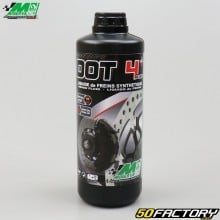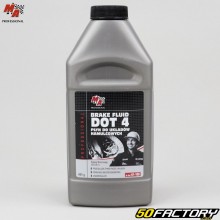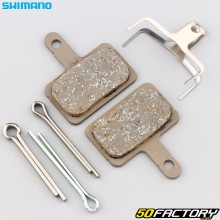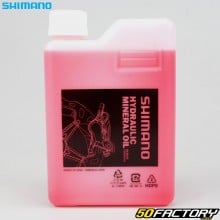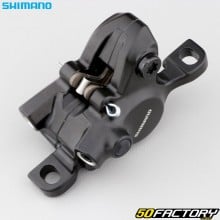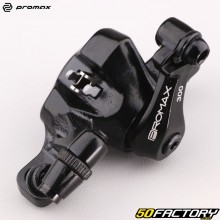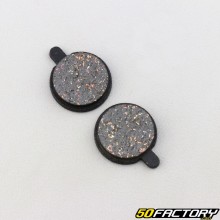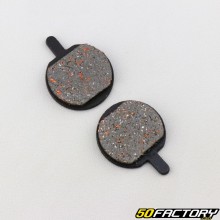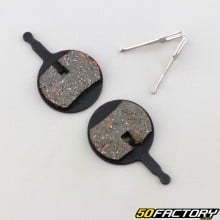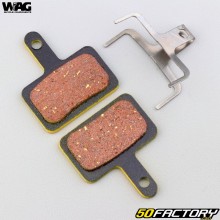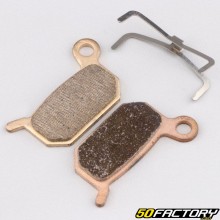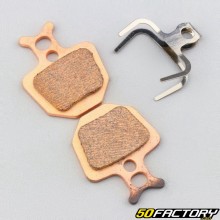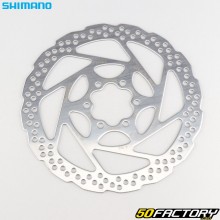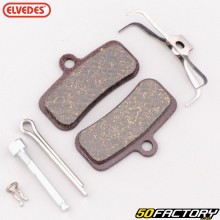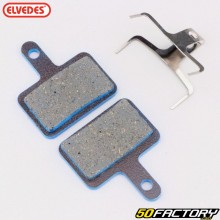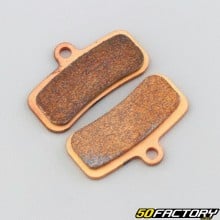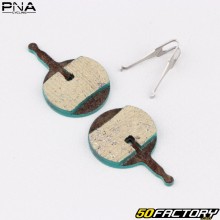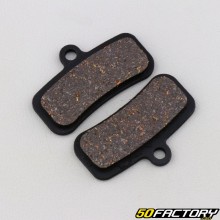 Disc brakes
Disc brakes
- IN STOCK5€90
- IN STOCK9€50
- IN STOCK9€00
- IN STOCK9€20
- IN STOCK5€50
- IN STOCK18€30
- IN STOCK9€20
- IN STOCK12€00
- IN STOCK6€40
-
- IN STOCK21€90
- IN STOCK8€90
- IN STOCK23€20
- IN STOCK10€70
- IN STOCK15€70
- IN STOCK8€30
-
- IN STOCK82€80
-
- IN STOCK7€60
-
- IN STOCK8€60
-
- IN STOCK8€50
- STOCK EXHAUSTED13€90
- IN STOCK9€70
- IN STOCK6€30
-
-
-
- IN STOCK7€50
- IN STOCK13€40
-
-
- IN STOCK5€30
-
-
- IN STOCK7€30
- IN STOCK8€20
- IN STOCK17€90
-
- IN STOCK4€00
Le disc brakes for VTC and trekking has become a popular choice among cyclists due to its many performance and safety benefits. Disc brakes are particularly popular for their stopping power and effectiveness in a variety of weather conditions. This article will explore in detail the characteristics of disc brakes for hybrid and trekking bikes, compare the different types of disc brakes, and provide practical advice on their selection, installation, and maintenance.
Introduction to disc braking for VTC and trekking
Understanding the role of disc brakes
Disc brakes are a crucial part of stopping your hybrid or trekking bike. Unlike rim brakes, disc brakes use calipers to clamp a metal disc mounted on the wheel hub. This braking method provides greater stopping power and better modulation, meaning the rider can more precisely control the force braking applied.
Advantages of disc braking for VTC and trekking
Disc brakes offer several benefits, including increased stopping power, better performance, and improved braking performance.ar wet weather, and reduced rim wear. In addition, they require less force on the part of the rider to achieve effective braking, which is crucial on long descents or on rough terrain. They are also more durable and require less frequent maintenance par compared to traditional rim brakes.
The different types of disc brakes
Mechanical disc brakes
Mechanical disc brakes use cables to operate the calipers. They are generally simpler to maintain and adjust than hydraulic brakes. However, they may require more frequent adjustments to maintain optimal performance. Mechanical brakes are often chosen for their simplicity and lower cost.
Hydraulic disc brakes
Hydraulic disc brakes use fluid to transmit the force brake levers to the calipers. They provide more consistent stopping power and better modulation. Although they are more expensive and require more specialized maintenance, hydraulic brakes are often considered the best choice for riders seeking maximum braking performance.
Comparison of disc brake systems
The main difference between mechanical and hydraulic disc brake systems is the way the brake is transmitted. force braking. Mechanical brakes use cables, while hydraulic brakes use fluid. Hydraulic brakes offer better modulation and more consistent stopping power, but are more complex and expensive to maintain. Mechanical brakes, on the other hand, are simpler and less expensive, but may require more frequent adjustments.
Choosing the right disc brakes for your hybrid or trekking bike
Depending on the type of bike
The choice of disc brakes depends largely on the type of your hybrid or trekking bike. Par For example, for a trekking bike intended for long rides with heavy loads, hydraulic brakes may be preferable due to their superior braking power and modulation. For a VTC used mainly in urban environments, mechanical brakes may be sufficient and more economical.
Depending on driving style
Your riding style also influences your choice of disc brakes. If you’re into touring or mountain biking, hydraulic brakes can provide the performance needed for technical descents and varied conditions. For recreational use or city commutes, mechanical brakes can provide adequate stopping power while being easier to maintain.
Quality criteria to make the right choice
When choosing disc brakes, it is important to consider several quality criteria, including durability, ease of maintenance, and compatibility with your bike. Look for brakes made byar reputable brands and check user reviews to ensure their reliability. Also, make sure the brakes are compatible with other components on your bike, such as brake levers and wheels.
Installation and adjustment of disc brakes
Installation process
Installing disc brakes on your hybrid or trekking bike may seem complex, but with the right tools and a little patience, it is definitely achievable. Start byar Mount the rotors onto your wheel hubs, then attach the calipers to the brackets on your frame and fork. Next, install the brake levers onto your handlebars and connect them to the calipers using the cables or hydraulic hoses. Make sure all components are properly aligned and tightened before testing the brakes.
Tuning for optimum performance
To ensure optimum performance from your disc brakes, it is essential to adjust them correctly. Make sure the calipers are properly aligned par relative to the discs and that the brake pads are in good condition. Adjust the cable tension for mechanical brakes or bleed the hydraulic system for hydraulic brakes to remove air bubbles. Test the brakes by riding gently and adjust if necessary to obtain precise and effective braking response.
Disc Brake Maintenance
Regular maintenance
Regular maintenance is essential to maintaining the performance of your disc brakes. For mechanical brakes, check cable tension regularly and replace cables if they are worn or frayed. For hydraulic brakes, bleed the system every six months to a year to prevent air bubbles from forming. Clean the rotors and brake pads to remove dust and dirt, and replace the pads when they are worn.
Signs indicating the need for repair
It's important to know the signs that your disc brakes need repair. If you notice a decrease in stopping power, grinding noises, or vibrations when braking, it's time to check the condition of your brakes. Worn brake pads, warped rotors, or hydraulic fluid leaks are all signs that repairs or replacements are needed.
Common Mistakes to Avoid with Disc Brakes
Improper use
Improper use of disc brakes can result in premature wear or damage. Avoid sudden or excessive braking, as this may causear This can cause the discs and pads to overheat. Try to brake in a gradual and modulated manner to maintain optimum performance and extend the life of your brakes.
Lack of maintenance
Lack of maintenance is one of the leading causes of disc brake failure. Neglecting to check and replace cables, bleed the hydraulic system, or clean the rotors and pads can significantly reduce the effectiveness of your braking. Follow a regular maintenance schedule to ensure your disc brakes are always performing optimally.
Disc brakes for VTC and trekking at 50 Factory
Our selection of disc brakes
At 50 Factory, we offer a wide range of disc brake systems for hybrid and trekking bikes. Whether you are looking for mechanical or hydraulic brakes, brake pads or discs, we have the products you need to ensure optimum braking performance. Our products are carefully selected for their quality and reliability, in order to meet the needs of the most demanding cyclists.
The advantages of choosing our products
By choosing disc brake products for VTC and trekking bikes from 50 Factory, you benefit from several advantages. We offer high-quality parts at competitive prices, as well as a dedicated customer service to answer all your questions and help you find the right parts for your bike. In addition, our extensive online catalog makes it easy to find the components you need, with fast and reliable delivery options.










